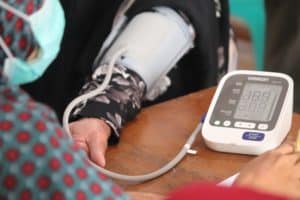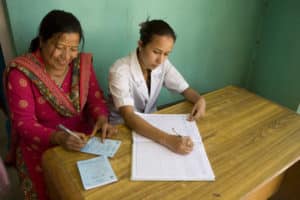Return to CVD Roadmaps Home
The World Heart Federation Roadmap for Secondary Prevention of Cardiovascular Disease identifies roadblocks and suggests potential solutions to improve cardiovascular health and help reach the target set out in the Sustainable Development Goals: achieve a 30% reduction in NCDs, including CVD, by 2030.
This WHF Roadmap has been written by eight experts from around the world: Pablo Perel, Alvaro Avezum, Mark Huffman, Prem Pais, Anthony Rodgers, Raj Vedanthan, David Wood and Salim Yusuf.
A Roadmap is a framework to identify roadblocks and suggest potential solutions on the road to 2030. Global Roadmaps have been developed by worldwide experts to detect the problems and offer solutions on specific topics impacting cardiovascular mortality.
This Roadmap was launched on 13 February 2015 at the Policy Forum on the Secondary Prevention of Cardiovascular Disease, and published in Global Heart.
Overview
WHF developed the roadmap on Secondary Prevention with experts and its members to help identify the roadblocks to raising the uptake of secondary prevention interventions which would aid in reaching the 25by25 targets. The roadmap proposes potential solutions to overcoming barriers at different health systems levels.
Challenges
About 35 million people have an acute coronary or cerebrovascular event every year, and between 20% to 40% of these events occur in individuals with established vascular disease. The five year CVD rate of recurrent MI, stroke or heart failure or CV death, is estimated to be about 30 % for patients with known cardiovascular disease, which is about five times greater than the corresponding rate of people without known CVD. Those with clinical vascular disease (coronary heart disease, cerebrovascular disease, or peripheral vascular disease) can be easily identified and efficiently treating them with effective, evidence-based therapies, would prevent many vascular events and their complications, death and disability. This would reduce health care costs, increase economic productivity and improve quality of life in this population.
Target
The target is to make secondary prevention available to at least 50 per cent of the eligible population, by 2025.
Definition
Secondary Prevention refers to preventing heart attack and stroke through drug therapy and counseling for high risk individuals – such as those with previous events or known cardiovascular diseases (CVD). Secondary cardiovascular prevention can be defined as any strategy aimed to reduce the probability of a recurrent cardiovascular event in patients with known atherosclerotic cardiovascular disease, including coronary artery disease, cerebrovascular artery disease, peripheral artery disease, and atherosclerotic aortic disease.













